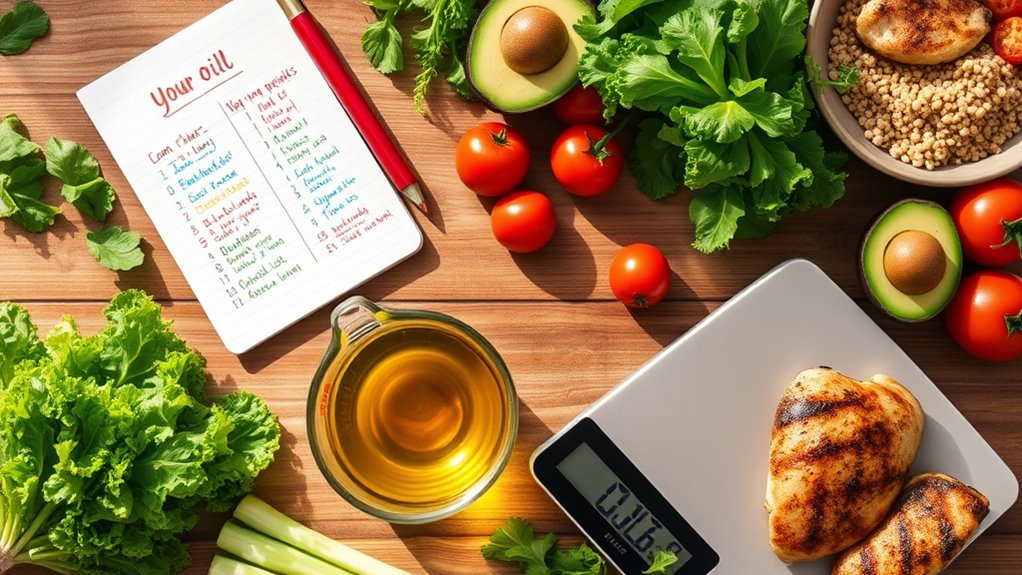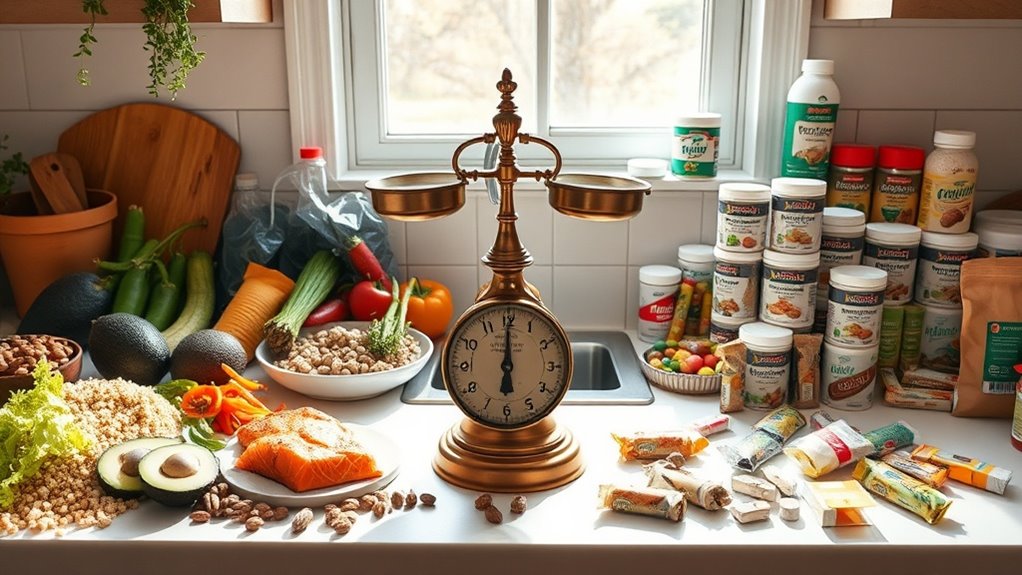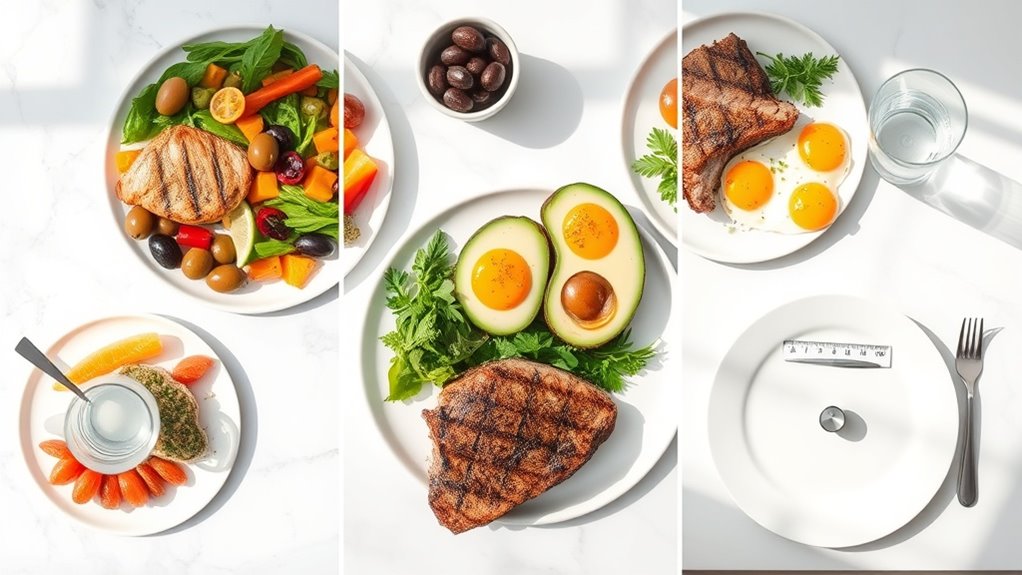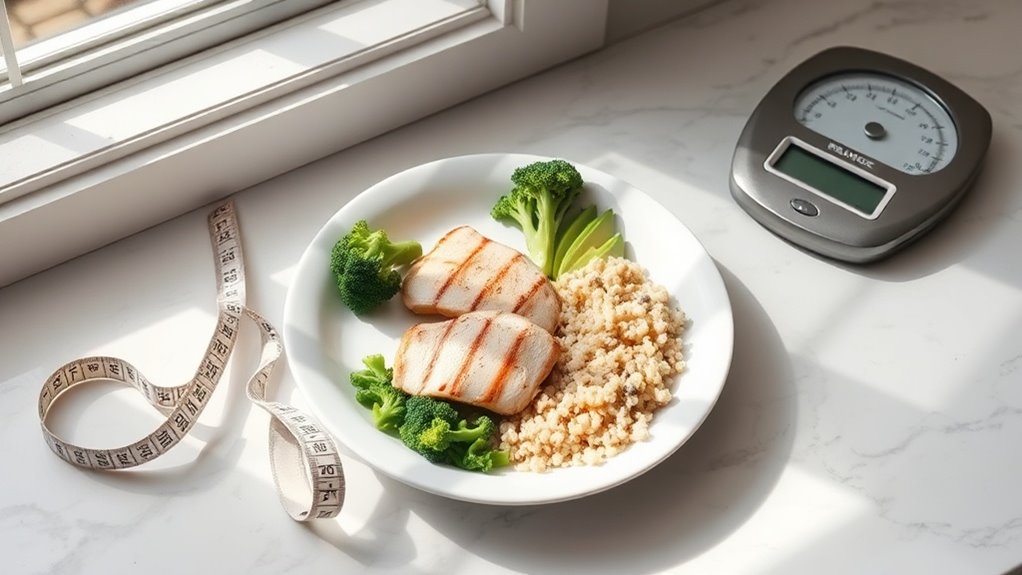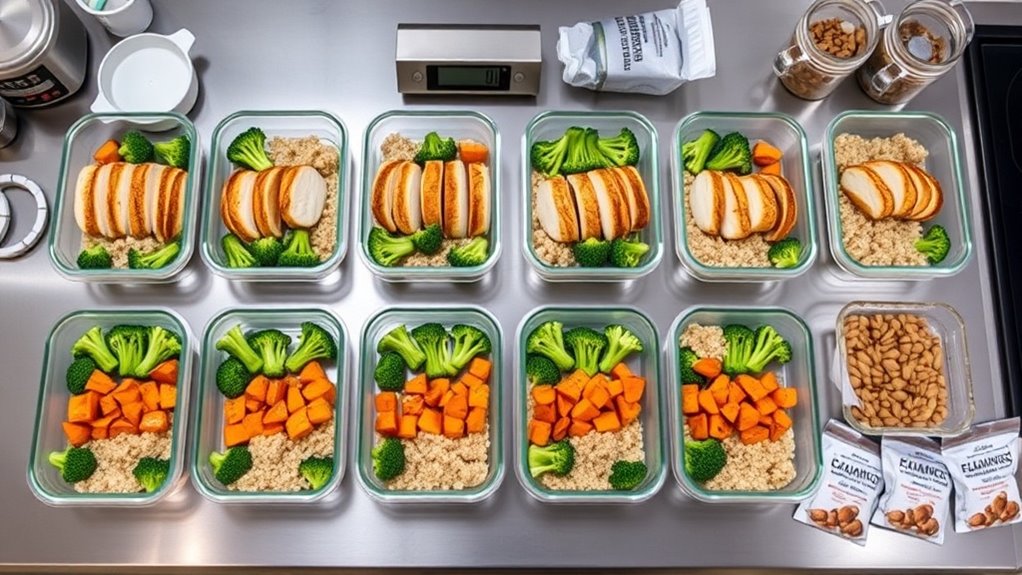Build Your Own Fat-Burning Meal Plan in 3 Simple Steps!
To build your own fat-burning meal plan, start by assessing your nutritional needs: calculate daily caloric intake and determine your ideal macronutrient ratios based on activity level. Next, select fat-burning foods like lean proteins, whole grains, and healthy fats to fuel your body. Finally, create a weekly meal schedule, ensuring you include balanced meals and snacks. This structure keeps you on track and prevents cravings. Stick around to uncover more tips for achieving your weight loss goals!
Assess Your Nutritional Needs
How can you tailor your meal plan to maximize fat burning?
First, assess your nutritional needs by calculating your daily caloric intake and macronutrient ratios.
This helps you understand how to create meal plans for weight loss effectively.
Consider your activity level, age, and weight goals to customize your plan.
Focus on incorporating enough protein to support muscle maintenance, healthy fats for satiety, and fiber-rich carbohydrates to promote energy.
Tracking your food intake can provide insights into what works for you. Additionally, be mindful of sustainable changes that can help you avoid weight regain and support long-term progress.
Select Your Fat-Burning Foods
Selecting the right fat-burning foods can make a significant difference in your meal plan’s effectiveness.
To maximize your results, focus on incorporating these three types of foods:
- Lean Proteins: Chicken, turkey, and fish help build muscle and boost metabolism.
- Whole Grains: Quinoa, brown rice, and oats provide sustained energy and fiber, keeping you full longer.
- Healthy Fats: Avocados, nuts, and olive oil support hormone balance and nutrient absorption. Additionally, including nutrient-rich foods can enhance your overall weight loss efforts.
Create Your Weekly Meal Schedule
With the right fat-burning foods in your pantry, it’s time to create a weekly meal schedule that maximizes their benefits.
Start by planning three balanced meals and two snacks daily, incorporating lean proteins, healthy fats, and fiber-rich carbohydrates.
Use a mix of cooking methods like grilling, steaming, and roasting to keep meals interesting and nutritious.
Designate specific days for meal prep, ensuring you have ready-to-eat options, which can help you resist unhealthy choices.
Lastly, stay flexible; adjust your meals based on your activity levels and cravings. Incorporating whole foods into your meal plan can provide better fuel for your body.
Consistency is key, so make your schedule a habit for lasting results.

